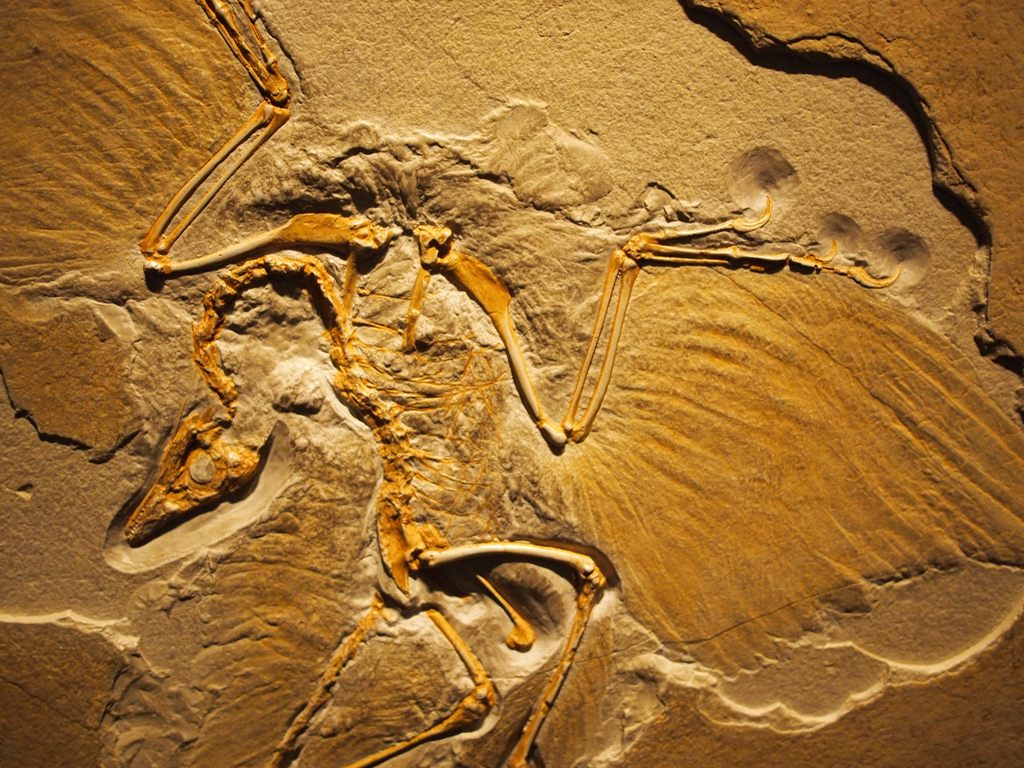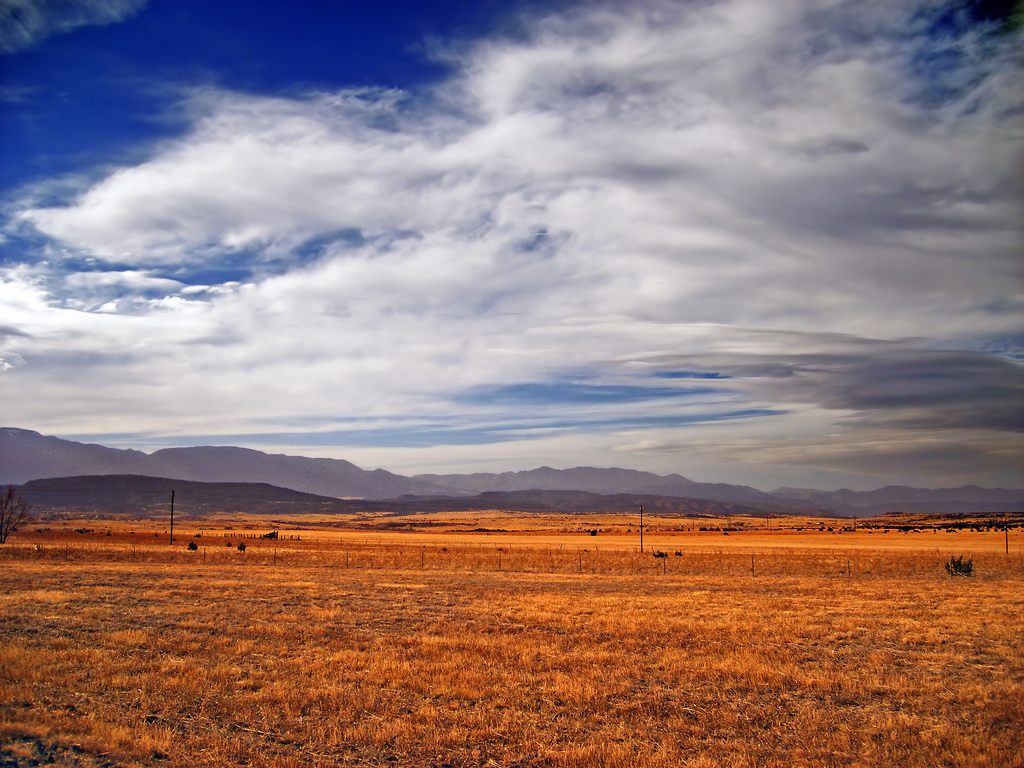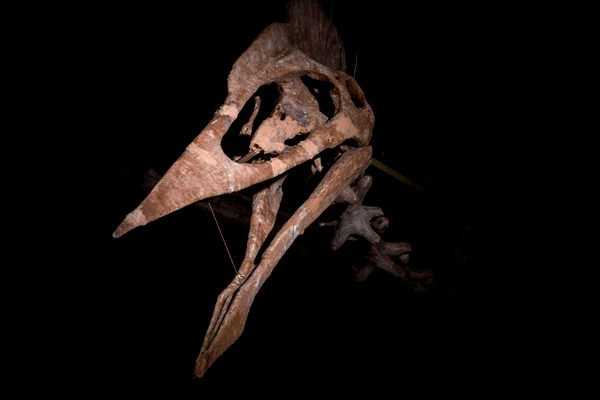How To Become A Fossil After You Die

A cast of an archaeopteryx specimen in the Australian Museum. (Photo by Denise Chan via Flickr)
Think of how many people have seen the most famous dinosaur and hominid fossils on display in the world’s natural history museums. It’s in the millions. These ordinary creatures that died, usually in some ordinary way, are now some of the most famous organisms in the history of the world, the subject of fascination hundreds of thousands of years later. It’s amazing. We should all have a chance at that kind of fame.
But what are the chances an individual human will become a fossil and end up as celebrated as Leonardo the partially mummified Brachylophosaur?
“Pretty minimal,” laughed Mark Norell, the chair of the paleontology department at the American Museum of Natural History. There are things you can do, especially in your last breathing moments, to goose your chances of become a fossil, but, he says, there’s no way to guarantee that your fossilized bones will be discovered in 100,000 years.

“We have a fossil record, and it goes back billions of years, but nevertheless it only represents a miniscule fraction, like point-zero-zero-zero-etcetera percent, of both individuals and species that have ever lived on the planet, because most things just don’t preserve,” says Norell. “It’s a very rare event to become a fossil.”
So before we can get to tips and tricks for becoming a fossil, we have to do some basic work and figure out what, precisely, a fossil even is, and where they come from.
“Fossils are basically any indication of ancient life,” says Norell. “That can be body fossils, bone fossils, fossil seashells, and even things like tracks.”

Fossil nautilus. (Image via Hitchster/Flickr)
There are a few different ways fossils can be preserved for the 10,000 years or so it takes to be considered a fossil (before that, material is considered remains, or evidence, or something other than a fossil. It’s kind of a loose definition). The most important part: the body has to be buried suddenly, which is rare. Rapid burial can happen due to natural effects, including volcanic eruptions, which bury things in ash, or dying near a flooding stream, which rapidly covers the body in sediment.
Now and then, an animal is preserved intact in a substance like tar or resin, but it’s a better bet to try to get rid of our lousy, temporary body parts entirely, and replace them with something stronger, like crystals. Most fossils are made when mineral-rich water interacts with decaying bodies: minerals, like silica and calcite, are left behind, sometimes within cells, sometimes in the places where cells used to be, and, thanks to time and pressure, become solid. Imagine a deflating balloon that you fill slowly, as slowly as it deflates, with molten metal. Eventually the balloon will be not really a balloon anymore, but it will still have the shape of a balloon–and it’ll be much, much more sturdy than it ever was during its time as a flimsy structure of air and rubber.
So, that’s how fossils are made. But how can an individual person attempt to become one?
Certain types of animals are more likely to end up as fossils. Mostly that’s due to how many very hard body parts we have: those body parts have to survive for quite awhile without being broken by the elements in order to even begin those various fossilization processes. Birds, for example, are very, very rare in the fossil record, because avian bones are incredibly fragile, and are unlikely to remain intact long enough to become fossils. On the other hand, it turns out humans are actually fairly well-suited to becoming fossils.
“Mammals have a very good record, because teeth make fantastic fossils,” says Norell. “They’re incredibly hard, incredibly resilient. Most of the fossils we find of mammals are teeth.” Great! We have lots of teeth. Mammal bones, too, are quite hard compared to avian or reptile bones. We’ve got a head start already. On the other hand, there aren’t that many humans in the fossil record, which starts, remember, somewhere around 10,000 years ago. That’s why fossils like Lucy, an Australopithecus fossil found in Ethiopia, are such a big deal. So how come there aren’t more?
Norell says it’s because, until the modern era, there simply weren’t all that many humans. “You look at East Africa and you find, like, hundreds of fossil cows for every Australopithecus fossil you find,” says Norell, referring to an extinct early hominid. But that’s changed in the past few thousand years, and there are lots and lots of human remains found from the Neolithic times right up to the present, just lying around.

A cast of Homo neanderthalensis in the American Museum of Natural History. (Photo by Adam Foster via Flickr)
Even better, human burial rites are often, albeit accidentally, really effective pre-fossilization prep. An animal that dies typically lays where it, in all likelihood, will be eaten by scavengers or bashed around by heat, humidity, rocks, water, and other environmental hazards. But we humans bury our dead. And we don’t just bury: we often bury in caskets, which have the effect of protecting the corpse during its early, most vulnerable years on the long road to fossilization.
“We can look at graves from the Medieval period, 500, 600 years ago, that have been exhumed, and the caskets have decomposed but the bodies are usually in pretty good shape,” says Norell. We are, effectively, performing our own rapid burial procedures that normally would have to come from extraordinary natural events.
But there are also major location-based factors in deciding whether you’ll become a fossil. It’s a bad idea to be anywhere near a fault line; earthquakes tend to break up burgeoning fossils and sometimes, even if the fossil remains intact, can hurl them deep underground where it’s unlikely they’ll be found. You will also want to be somewhere that’s well-drained, so running water can’t bash the proto-fossil body apart, or raise it to the surface where it’ll be eaten by scavengers.
Where, praytell, is the best place for aspiring fossils to die?
“You can’t really predict what’s going to happen in the future,” says Norell, “but an ideal kind of place would be someplace out on the Great Plains.” It’s got everything: it’s tectonically stable, well-drained, with few major rivers running through it. It’s likely to stay the way it is for quite a long time. “Those sorts of habitats, we know from excavating animals all over the world, are most likely to preserve fossils,” says Norell.
There’s even the potential to be buried the way the dinosaurs were, in a natural event. The Yellowstone Caldera, in Wyoming, has a history of belching huge amounts of volcanic ash all over the Great Plains. You don’t want to be too close to the volcano, because there’s a fair amount of earth-shaking movement around it, but western Nebraska and northwestern South Dakota seem just about perfect.
If you want to become a fossil, and achieve textbook fame in tens of thousands of years and get studied as an educational example of bad ecological behavior, die intact, and be buried somewhere in the Great Plains. And make sure you have all your teeth.

This prairie in Colorado might be a fitting fossil graveyard. (Photo by Nicholas A. Tonnelli via Flickr)







Follow us on Twitter to get the latest on the world's hidden wonders.
Like us on Facebook to get the latest on the world's hidden wonders.
Follow us on Twitter Like us on Facebook